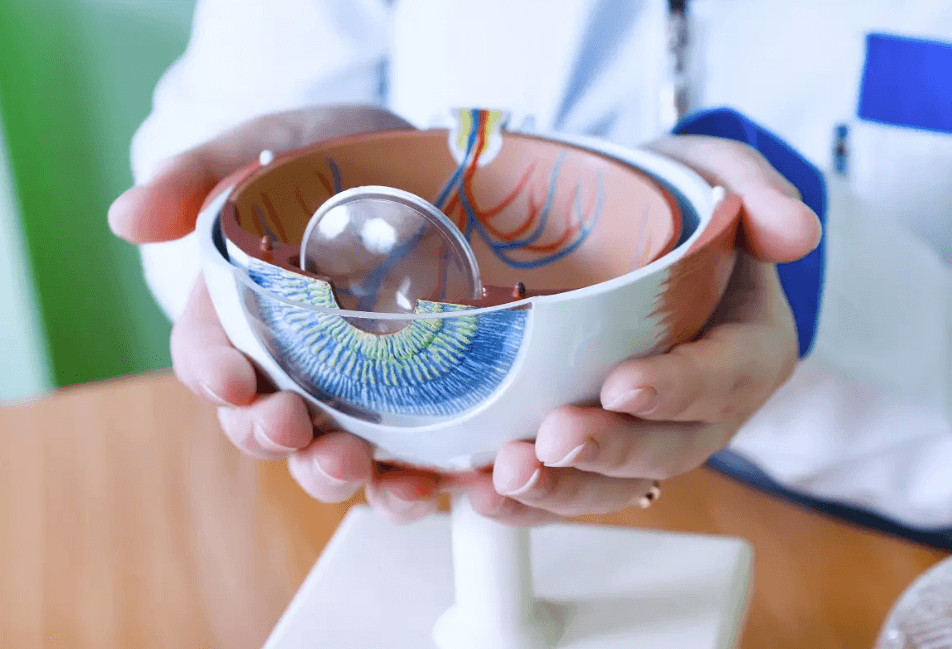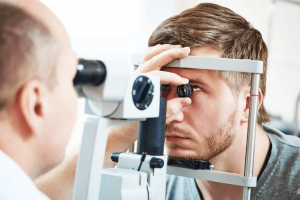Eye Strokes: How, What, and Why They Occur
Sub Title

The eyes rely on blood flow to provide nutrients and oxygen to the eye. When there is a blockage, eye strokes can occur because the blood cannot flow freely. These blockages can be the result of retinal artery and vein occlusions. After a stroke in the eye, damage can occur where there is a loss of vision, weakened optic nerve, and other such problems associated with strokes.
How Do Eye Strokes Occur?
When there is a blockage in the retinal artery and veins in the eyes, it prevents oxygen from reaching the retina. The retina is in the back of the eye and is responsible for deciphering images and sending signals to the brain to help us distinguish color, what an object is, etc.
The blocked retinal artery and veins will leak excess fluid into the retinal area of the eye. As the fluid is released, the body’s natural response is to treat it as an invader, so eye swelling can occur. The swelling further cuts off circulation and prevents oxygen from reaching the retina.
As such, you quickly notice your vision is impaired. The type of impairment can vary, including complete blindness.
What Are Common Symptoms of Eye Strokes?
The body will send you specific warning signals before eye strokes occur. The symptoms can develop slowly over several days. Yet, some people have a quick, sudden onset without any advanced warning whatsoever. In general, you want to pay attention if you have one or more of the following symptoms:
- Blurred Vision – If you experience blurred vision in one or both eyes, and it continues to worsen, it may be a warning an eye stroke is going to occur.
- Floaters – If you see spots floating around and have not looked directly into a bright light for a prolonged period, it may indicate an eye stroke could occur.
- Vision Loss – If you notice your vision is declining and continues to do so, or experience total vision loss, you might have had an eye stroke.
- Pressure or Pain – If you are experiencing pressure or pain in one or both eyes, it could indicate an eye stroke will occur, but not always. Most eye strokes occur without this symptom present.
Why Do Eye Strokes Occur?
Eye strokes occur based on your overall health and well-being. While anyone could have an eye stroke, certain factors increase the risks for eye strokes, such as:
- Smoking and Vaping
- High Blood Pressure
- Obesity
- Glaucoma
- High Cholesterol
- Cardiovascular/Circulatory System Conditions
- Heart Disease
- Diabetes
They occur because there is a restriction to the blood flow in the eye that creates a blockage and stops blood from flowing through the eyes correctly.
What Do I Do if I Suspect I Had an Eye Stroke?
You will want to schedule an examination with an ophthalmologist right away. Your eye doctor can use various tools and equipment to determine if there is indeed a blockage and whether a stroke has occurred.
After your initial assessment, your ophthalmologist will prescribe a treatment plan based on the level of damage done to the eye. Possible treatments could include:
- Laser Eye Surgery
- Prescription Eye Drops
- Eye Massage
- Various Types of Eye Injections to Remove the Blockage
It is important to remember, the sooner you can be diagnosed and treatment can begin, the more likely you can recover from an eye stroke and restore your vision.
For further information about eye strokes, or to schedule an eye exam if you believe you have had an eye stroke, please feel free to contact Dougherty Laser Vision at (805) 793-1647 today! We have office locations in Westlake Village, Camarillo, Beverly Hills, Simi Valley, and Encino.


